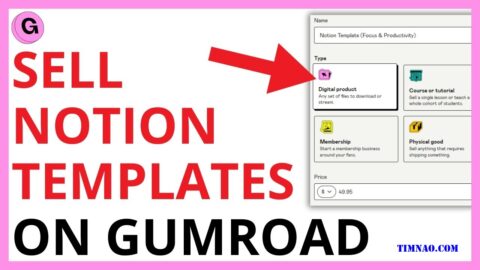Turn Likes into Income: 8 Steps to Master Social Media Management & Build Your Dream Career ✨
Social media management is no longer just a buzzword; it’s a fundamental pillar of modern business, communication, and personal branding. In a world where billions are connected online, navigating the dynamic landscape of platforms like Instagram, TikTok, LinkedIn, Facebook, and beyond is crucial for success. Whether you’re a business owner trying to connect with customers, an influencer building a community, a non-profit raising awareness, or someone just fascinated by the digital world and looking for an exciting career path, understanding social media management is key.
But let’s be honest, keeping up with social media can feel like trying to drink from a firehose. New trends emerge daily, algorithms change constantly, and the pressure to create engaging content never stops. Many businesses and individuals find themselves overwhelmed, struggling to find the time and expertise to manage their online presence effectively. That’s where the magic of social media management comes in, and why skilled professionals in this field are more in demand than ever.
This guide is your comprehensive starting point. We’ll break down exactly what social media management entails, why it’s incredibly important in 2025, the day-to-day responsibilities involved, how you can turn these skills into a career or business, and the latest trends and tools you need to know. Let’s dive in!
What Exactly is Social Media Management? 🤔
At its core, social media management is the process of overseeing, planning, executing, and analyzing an individual’s or organization’s presence and activities across various social media platforms. Think of a social media manager as the conductor of an orchestra; they ensure all the different instruments (platforms, content types, audience interactions) work together harmoniously to achieve specific goals.
It’s far more than just randomly posting updates. It involves a strategic approach encompassing:
- Understanding the Audience: Who are you trying to reach? What are their interests, needs, and online behaviors?
- Setting Clear Objectives: What do you want to achieve? Increase brand awareness? Drive website traffic? Generate leads? Build a loyal community?
- Developing a Strategy: Creating a roadmap that outlines which platforms to use, what kind of content to create, when to post, and how to measure success.
- Content Creation & Curation: Crafting engaging text, eye-catching visuals, compelling videos, and sharing relevant content from other sources.
- Community Engagement: Actively interacting with followers, responding to comments and messages, fostering conversations, and building relationships.1
- Analytics & Reporting: Monitoring performance, tracking key metrics, understanding what works (and what doesn’t), and adjusting the strategy accordingly.
Essentially, a social media manager acts as the vital bridge between a brand (or individual) and its online community, ensuring the digital voice is consistent, authentic, and effectively resonates with the target audience while supporting broader objectives.
Why is Effective Social Media Management Absolutely Crucial Today? ✨
In 2025, having a social media presence isn’t optional; it’s essential. But simply being on social media isn’t enough. Effective social media management provides significant advantages:
- Increased Brand Awareness & Visibility: Consistently sharing valuable content puts your brand in front of potential customers and keeps it top-of-mind. With organic reach declining on many platforms, strategic management, including targeted ads, is vital for visibility.
- Lead Generation & Sales: Social media is increasingly becoming a discovery and sales channel. Social commerce features allow users to purchase directly within apps, making a well-managed presence a direct revenue driver.
- Building Community & Loyalty: Engaging with your audience, responding to feedback, and fostering a sense of belonging turns followers into loyal advocates. Private communities are also on the rise, offering dedicated spaces for deeper connection.
- Customer Service & Support: Social media is often the first place customers turn with questions or complaints. Prompt and helpful responses managed through social channels can significantly enhance customer satisfaction. AI-powered chatbots are increasingly used for instant support.
- Reputation Management: Monitoring brand mentions allows you to address negative feedback proactively and manage crises effectively, protecting your online image. Social listening tools are key here.
- Gathering Audience Insights: Social media provides invaluable data about your audience’s preferences, pain points, and behaviors, which can inform product development, marketing strategies, and content creation.
- Staying Competitive: Your competitors are likely using social media. An active and well-managed presence ensures you don’t fall behind and allows you to monitor their activities.
- Driving Website Traffic: Sharing links to blog posts, product pages, or landing pages can significantly boost traffic to your website.
- Authenticity & Trust: In an era wary of overly polished marketing, genuine interactions and user-generated content (UGC), often facilitated by social media managers, build crucial trust.
The bottom line? Strategic social media management isn’t just about posting pictures; it’s about building relationships, driving business results, and shaping perception in the digital age.
The Exciting World of a Social Media Manager: Daily Responsibilities 🚀
So, what does a social media manager actually do all day? While tasks vary depending on the client or company, the role is dynamic and multifaceted. Here’s a breakdown of common responsibilities:
1. Strategic Planning & Content Calendars
- Developing Strategy: Defining goals (e.g., brand awareness, lead generation, engagement), identifying target audiences, selecting appropriate platforms, and outlining key themes and messages.
- Creating Content Calendars: Planning out posts weeks or months in advance, detailing the content type, copy, visuals, hashtags, and posting schedule for each platform. This ensures consistency and alignment with overall marketing campaigns.
2. Content Creation & Curation 🎨✍️🎬
- Crafting Engaging Copy: Writing clear, concise, and compelling captions, headlines, and text that resonate with the audience and align with the brand’s voice.
- Designing Visuals: Creating or sourcing eye-catching images, graphics, infographics, and GIFs using design tools (like Canva).
- Producing Videos: Short-form video (TikToks, Reels, Shorts) is king! This involves filming, editing, adding trending audio (appropriately!), and creating engaging video content. Longer-form video for platforms like YouTube is also relevant. Authenticity often trumps high production value here.
- Content Curation: Finding and sharing relevant articles, news, user-generated content (UGC), or posts from other sources that provide value to the audience.
- Leveraging AI: Utilizing AI tools (increasingly integrated into platforms) to assist with brainstorming ideas, drafting copy, generating image variations, or even creating video content – while ensuring authenticity and quality control.
3. Scheduling & Publishing 🗓️⏰
- Using Management Tools: Employing tools like Buffer, Hootsuite, or Sprout Social to schedule posts across multiple platforms efficiently.
- Optimizing Posting Times: Analyzing data to determine when the target audience is most active on each platform to maximize visibility and engagement. Many tools now offer recommendations.
- Platform Adaptation: Tailoring content format and style for each specific platform’s best practices and audience expectations (e.g., professional tone on LinkedIn vs. trendy on TikTok).
4. Community Engagement & Management 💬🤝
- Responding Promptly: Monitoring notifications and responding to comments, messages, and mentions in a timely and helpful manner.
- Fostering Conversation: Asking questions, running polls, initiating discussions, and actively participating in relevant conversations to build relationships.
- Building Community: Nurturing online groups (like Facebook Groups or Discord servers), moderating discussions, and creating a welcoming environment.
- User-Generated Content (UGC): Encouraging and amplifying content created by the audience, which builds trust and authenticity.
5. Monitoring, Analytics & Reporting 📊📈
- Tracking Key Performance Indicators (KPIs): Monitoring metrics like reach, impressions, engagement rate (likes, comments, shares), click-through rate (CTR), follower growth, video views, conversion rates, and sentiment.
- Using Analytics Tools: Utilizing built-in platform analytics and third-party tools to gather data and understand performance.
- Creating Reports: Compiling regular reports (weekly, monthly, quarterly) to showcase results, highlight insights, demonstrate ROI, and inform future strategy adjustments. Visualizing data effectively is key.
- Social Listening: Using tools to monitor brand mentions, industry keywords, competitor activity, and overall market sentiment to stay informed and identify opportunities or potential issues.
6. Staying Updated & Adapting 🔄🧠
- Following Trends: Keeping abreast of the latest social media trends, platform updates, new features, algorithm changes, and best practices. This field changes fast!
- Learning New Tools: Exploring and learning how to use new software and technologies (including AI tools) that can improve efficiency and effectiveness.
- Experimenting: Testing new content formats, strategies, and approaches to continuously optimize performance.
7. Advertising Campaign Management 🎯💸
- Setting Up Campaigns: Creating paid ad campaigns on platforms like Facebook, Instagram, LinkedIn, etc., to reach specific target audiences.
- Budget Management: Allocating and managing advertising budgets effectively.
- Ad Creation: Designing ad creatives (visuals, video, copy) optimized for conversion.
- Monitoring & Optimization: Tracking ad performance, analyzing results, and making adjustments (A/B testing, targeting changes) to maximize return on ad spend (ROAS).
8. Crisis Management & Reputation Protection 🛡️🗣️
- Monitoring for Issues: Keeping an eye out for negative comments, complaints, or potential PR crises.
- Developing Response Plans: Having protocols in place for handling negative situations professionally and swiftly.
- Addressing Complaints: Responding to customer issues constructively and attempting to resolve problems publicly or privately.
It’s a busy role that requires a blend of creativity, analytical thinking, communication skills, and adaptability!
Launching Your Social Media Management Career: Paths to Success 💼
The growing demand for skilled social media management means there are numerous avenues to pursue this as a career or business. Here are the most common paths:
1. Freelance Social Media Manager
- What it is: Working independently and offering your services to multiple clients on a project or retainer basis.
- Pros: Flexibility in choosing clients and projects, setting your own hours, potential for high income, diverse experience.
- Cons: Need to constantly find new clients, income can be less predictable initially, responsible for all aspects of business (invoicing, taxes, etc.).
- Best for: Self-starters, those who enjoy variety, individuals building a portfolio. Many small businesses specifically seek freelancers.
2. Start Your Own Social Media Management Agency
- What it is: Building a formal business around your services, potentially hiring a team to handle more clients and larger projects.
- Pros: Scalability, potential for significant growth and revenue, building a recognized brand, ability to offer a wider range of services.
- Cons: Higher startup costs and overhead, requires business management skills, more responsibility (managing staff, finances).
- Best for: Entrepreneurial individuals, those with strong leadership skills, experienced managers looking to scale.
3. Niche Specialization
- What it is: Focusing your services on a specific industry (e.g., restaurants, tech startups, e-commerce, non-profits) or a particular platform (e.g., becoming an Instagram expert, a LinkedIn B2B specialist, a TikTok guru).
- Pros: Positions you as an expert, attracts clients seeking specialized knowledge, potentially command higher rates, allows for deeper understanding of a specific area.
- Cons: Limits your potential client pool, requires continuous learning within that niche.
- Best for: Those with passion/experience in a particular field, managers wanting to stand out in a competitive market.
4. In-House Social Media Manager
- What it is: Working as a full-time employee for a single company, managing their social media presence exclusively.
- Pros: Stable income and benefits, deep understanding of one brand, opportunity to integrate closely with other marketing efforts, access to company resources.
- Cons: Less variety than freelancing/agency work, potentially less flexibility, advancement may depend on company structure.
- Best for: Individuals preferring stability, those wanting to immerse themselves deeply in one brand’s strategy.
No matter the path chosen, success relies on continuous learning, building a strong portfolio, networking, and demonstrating results.
Monetizing Your Skills: Earning as a Social Media Manager in 2025 💰
How do you actually make money providing social media management services? The good news is, there are many income streams available:
Core Service Models:
- Retainer-Based Services: Clients pay a fixed monthly fee for ongoing management of their social media accounts. This provides predictable income for you and consistent service for the client. This is a very common model.
- Project-Based Fees (Freelancing): Charging per project, such as developing a social media strategy, running a specific campaign, or setting up profiles. Suitable for clients with short-term needs.
- Hourly Rate: Charging by the hour for your time. Often used for consulting or smaller, less defined tasks.
Value-Added Service Offerings:
Beyond basic management, you can significantly boost your income by offering specialized services:
- Ad Campaign Management: Charging fees or a percentage of ad spend for creating, managing, and optimizing paid social media advertising campaigns. Requires expertise in ad platforms.
- Influencer Marketing Management: Facilitating collaborations between brands and influencers, managing campaigns, and potentially earning commissions or management fees.
- Social Media Audits: Charging a one-time fee to conduct a thorough analysis of a client’s current social media presence, strategy, and performance, providing actionable recommendations.
- Content Creation Packages: Offering tiered packages specifically for content creation (e.g., X number of posts/videos per month) separate from full management.
- Training & Consultation: Charging for one-on-one coaching, group workshops, or online courses to teach others how to manage their own social media or improve specific skills.
- Community Management Services: Specializing in building and managing online communities (forums, Facebook Groups, Discord) for brands, often charged on retainer.
- Affiliate Marketing Integration: Strategically incorporating relevant affiliate links into the content you manage (with client permission and transparency), earning commissions on sales generated.
- Sponsored Content Brokering/Creation: Helping clients secure or create sponsored content opportunities, potentially earning a commission or creative fee. Authenticity is key.
- Selling Digital Products: Creating and selling templates (content calendars, report templates), guides, ebooks, or checklists related to social media management.
- Advanced Analytics & Reporting Services: Offering in-depth reporting and data analysis beyond standard metrics, providing deeper strategic insights for a premium fee.
Combining a core service model with several value-added offerings allows social media managers to build robust and diversified income streams.
Essential Tools for Social Media Management Success 🛠️
Managing multiple clients and platforms efficiently requires the right tools. While you can start with native platform features, dedicated social media management software quickly becomes essential. Here are some popular categories and examples (many offer free trials or limited free plans):
-
All-in-One Platforms (Scheduling, Analytics, Inbox):
- Buffer: Known for simplicity, great for creators and small businesses. Offers scheduling, analytics, engagement tools, and a landing page builder. Has a free plan for up to 3 channels.
- Hootsuite: A robust platform popular with larger teams and agencies. Offers extensive scheduling, monitoring, analytics, and team collaboration features. Can be more expensive.
- Sprout Social: Premium platform focused on engagement, publishing, analytics, and listening. Great for businesses needing advanced features and reporting, but comes at a higher price point.
- Zoho Social: Part of the larger Zoho ecosystem, known for affordability and flexible plans, especially good for individual brands or small agencies. Offers detailed scheduling and Zia AI assistant.
- Agorapulse: Strong focus on inbox management and reporting, good for teams needing robust engagement tools.
- Sendible: Designed for agencies managing multiple clients, offers content suggestions, workflows, and robust reporting.
- SocialPilot: Cost-effective option, particularly for agencies needing bulk scheduling and client management features.
- Planable: Focuses heavily on content collaboration and approval workflows, great for teams and agencies.
-
Content Creation & Design:
- Canva: User-friendly graphic design tool perfect for creating social media visuals, videos, and presentations quickly.
- Adobe Express: Another powerful, easy-to-use design tool from Adobe.
- CapCut / InShot: Popular mobile video editing apps for creating Reels and TikToks.
-
Analytics & Listening:
- Brand24 / Mention: Dedicated social listening tools to monitor brand mentions, keywords, and sentiment across the web.
- Google Analytics: Essential for tracking website traffic driven from social media.
- Metricool: Offers scheduling, analytics, and ad management with a useful free plan. Known for hashtag tracking and competitor analysis.
-
AI Assistants:
- ChatGPT / Gemini / Claude: Useful for brainstorming content ideas, drafting copy, summarizing information, and more.
- Platform-Native AI: Many tools (like Buffer, Hootsuite, Zoho Social, HubSpot) are integrating AI features for content generation, scheduling optimization, and analytics insights.
-
Link Shorteners & Landing Pages:
- Timnao.link: Popular URL shortener for tracking link clicks bio page creation & QR Code generation.
- Linktree / Buffer Start Page / Beacons: Tools to create a single link-in-bio landing page directing followers to multiple destinations.
The best tool stack depends on your specific needs, budget, and the scale of your operations. Start simple and add tools as required.
Navigating the Social Media Maze: Key Trends for 2025 🧭
The social media landscape is constantly shifting. Staying ahead requires awareness of the latest trends shaping how users interact and how brands should engage:
- The AI Revolution: AI is everywhere. Expect more AI-driven content creation tools, hyper-personalized user feeds based on AI analysis, AI virtual influencers, and AI chatbots for customer service. Transparency about AI use will be crucial.
- Short-Form Video Reigns Supreme: TikTok, Instagram Reels, and YouTube Shorts continue to dominate user attention. Content needs to be concise, engaging, authentic, and optimized for vertical viewing. “Zero-click content” (providing full value within the feed) is growing.
- Social Commerce Expansion: Buying directly through social platforms is becoming seamless. Features like shoppable posts, live shopping events, AR try-ons, and AI recommendations are making social media a key sales channel.
- Authenticity & User-Generated Content (UGC): Users crave realness. Polished, overly corporate content is less effective. Brands need to showcase genuine behind-the-scenes moments, customer stories, and amplify authentic UGC. Employee-generated content (EGC) is also rising.
- Rise of Niche & Private Communities: As public feeds get noisy, users are seeking connection in smaller, private groups (Facebook Groups, Discord, etc.). Brands can foster loyalty by creating or participating in these communities.
- Social SEO & Discovery: Users, especially younger demographics (Gen Z), are increasingly using platforms like TikTok and Instagram as search engines. Optimizing profiles and content with relevant keywords for platform search is becoming vital.
- AR/VR Integration: Augmented Reality filters are common, but expect more immersive experiences like virtual try-ons, interactive AR campaigns, and potentially integration with AR glasses or VR platforms like Meta’s Horizon Worlds.
- Audio Content Growth: Podcasts and social audio features (like X Spaces) continue to offer ways to engage audiences through longer-form, passive consumption.
- Data Privacy & Regulation: Increased scrutiny on data usage means brands must prioritize transparency and ethical data practices. Regulations may impact targeting capabilities.
- Platform Volatility & Diversification: The uncertainty around platforms like TikTok (potential bans) and changes at X (formerly Twitter) highlight the need for marketers to diversify their presence and not rely solely on one channel. Platforms like Threads and Bluesky are emerging alternatives.
- Ephemeral Content Evolution: Stories remain popular, incorporating more interactive and AI-powered features.
Adapting strategies to leverage these trends is key for effective social media management in 2025.
Facing the Hurdles: Common Challenges in Social Media Management (and How to Overcome Them) 🚧
While exciting, social media management isn’t without its challenges:
- Keeping Up with Constant Change: Algorithms shift, new features launch, trends explode overnight.
- Solution: Dedicate time for learning (follow industry blogs, attend webinars), experiment continuously, join professional communities.
- Declining Organic Reach: It’s harder to get content seen without paying.
- Solution: Focus on high-quality, engaging content; leverage formats favored by algorithms (e.g., video); utilize targeted advertising strategically; encourage sharing and engagement.
- High Content Demands: The need for consistent, high-quality content (especially video) can be overwhelming.
- Solution: Use content calendars, batch content creation, repurpose content across platforms, leverage UGC and EGC, utilize efficient tools (including AI responsibly).
- Managing Multiple Platforms Efficiently: Juggling different interfaces, best practices, and audiences is complex.
- Solution: Use management tools, focus on platforms where your target audience is most active, create platform-specific content variations.
- Proving ROI & Measuring Success: Connecting social media efforts to tangible business results can be difficult.
- Solution: Set clear, measurable goals upfront; track relevant KPIs consistently; use UTM parameters for link tracking; create comprehensive reports showcasing value.
- Lack of Resources (Time & Budget): Many businesses struggle with limited time, budget, or personnel.
- Solution: Prioritize high-impact activities, automate repetitive tasks with tools, focus on organic strategies first if budget is tight, consider outsourcing to freelancers or agencies.
- Maintaining Authenticity: Balancing brand messaging with genuine engagement can be tricky.
- Solution: Develop a clear brand voice, empower team members to engage naturally, showcase real people (employees, customers), be transparent.
- Negative Feedback & Crises: Dealing with trolls, complaints, or PR issues requires careful handling.
- Solution: Have a crisis management plan, respond promptly and professionally, know when to take conversations private, don’t feed trolls.
- AI Integration Risks: Over-reliance on AI can lead to generic content or backlash if not used transparently.
- Solution: Use AI as an assistant, not a replacement; always review and personalize AI-generated content; be transparent about AI use where appropriate.
Overcoming these challenges requires strategy, adaptability, the right tools, and continuous learning.
What to Expect: Social Media Manager Salary Insights 💸
Compensation for social media managers varies widely based on several factors:
- Experience Level: Entry-level positions naturally pay less than senior roles requiring strategic oversight and team management. Payscale suggests entry-level ( <1 year) averages around $45k, early career (1-4 years) around $54k, mid-career climbing significantly higher. Senior-level roles (7+ years) can reach well over $100k according to Coursera data.
- Location: Salaries are generally higher in major metropolitan areas with higher costs of living (e.g., San Francisco, New York City often show higher averages than the national US average). ZipRecruiter data shows significant variations between cities.
- Industry: Certain industries (like tech or finance) may offer higher salaries than others (like non-profit or retail).
- Company Size & Type: Large corporations or established agencies might offer higher pay than small businesses or startups.
- Specific Role & Responsibilities: A “Social Media Director” overseeing strategy and a team will typically earn more than a “Social Media Specialist” focused on execution. ZipRecruiter notes Directors earn significantly more than Managers on average.
- Freelance vs. In-House: Freelancers set their own rates, with income potential varying greatly based on client load and pricing structure.
General Ranges (US Data, varies significantly):
- Average Annual Salary: Often cited between $55,000 – $72,000 USD. ZipRecruiter puts the US average around $64,845, while Payscale reports $58,559 for 2025. CryptoJobsList suggests a global average of $72,300.
- Typical Range: Most fall somewhere between $45,000 and $80,000.
- Top Earners: Experienced managers, directors, or those in high-demand niches/locations can earn $90,000 – $150,000+.
Remember these are just averages. Research specific roles, locations, and industries for more accurate expectations. Building specialized skills (e.g., paid advertising, advanced analytics) can significantly increase earning potential.
Getting Started: Your First Steps into Social Media Management 👟
Feeling inspired to jump into the world of social media management? Here’s how beginners can start:
- Learn the Fundamentals: Understand the core concepts, terminology, and best practices for major platforms. Utilize online resources, blogs (like Buffer, Hootsuite, Social Media Examiner), free courses (HubSpot Academy, Google Digital Garage), and podcasts.
- Choose Your Platforms: Start by mastering one or two platforms relevant to your interests or potential niche. Don’t try to learn everything at once.
- Practice, Practice, Practice: Manage your own social media profiles strategically. Offer to help a friend, family member, or local non-profit manage theirs to gain hands-on experience.
- Build a Portfolio: Document your work! Take screenshots of engaging posts you created, showcase follower growth, highlight successful campaigns (even small ones). Create case studies explaining your strategy and results. A simple website or online portfolio is essential.
- Get Familiar with Tools: Experiment with free versions or trials of popular management tools like Buffer, Metricool, or Canva.
- Network: Connect with other social media professionals online (LinkedIn, X, relevant communities). Engage in conversations and learn from others.
- Consider a Niche: Think about industries or types of businesses you’re passionate about. Specializing can make you more marketable long-term.
- Stay Curious & Keep Learning: This field evolves rapidly. Make learning a continuous habit. Follow industry news, test new features, and adapt your skills.
Conclusion: Your Future in Social Media Management
Social media management is a dynamic, challenging, and incredibly rewarding field. It sits at the intersection of creativity, communication, technology, and strategy. As businesses and individuals increasingly rely on social platforms to connect, engage, and grow, the need for skilled professionals who can navigate this complex landscape effectively will only continue to rise.
Whether you aim to freelance, build an agency, or join a company in-house, mastering the art and science of social media offers immense opportunity in 2025 and beyond. By understanding the core responsibilities, utilizing the right tools, staying ahead of trends, and continuously honing your skills, you can build a successful and impactful career helping brands and individuals thrive in the digital world. The journey starts now!
Reference video:






